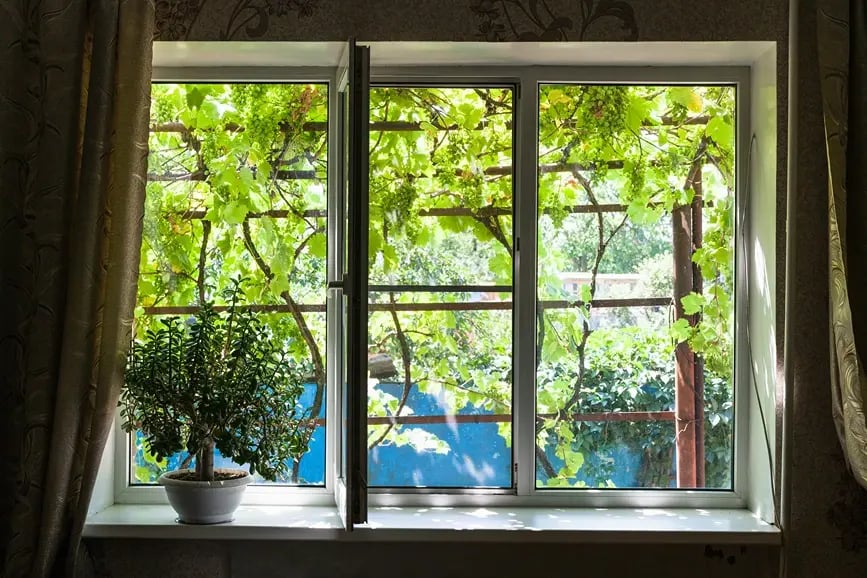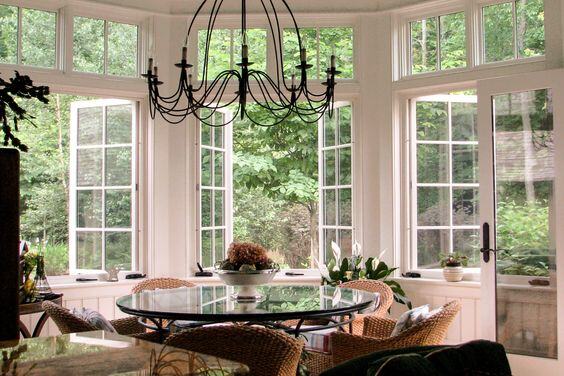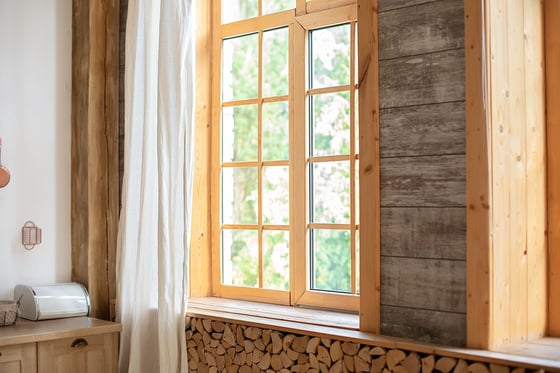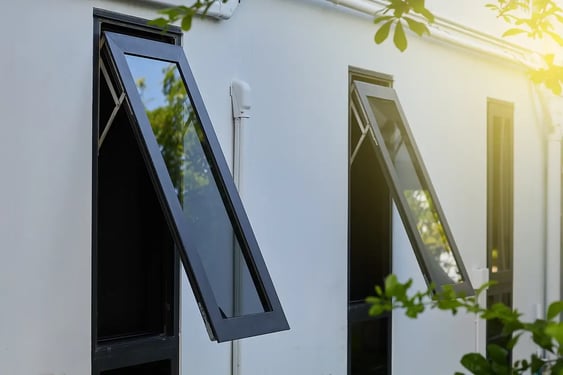Thinking about upgrading your home with new windows but overwhelmed by the choices? Or perhaps you're curious about what makes casement windows stand out from other window types?
Look no further. In this article, we'll explain what a casement window is, go over it's unique features and benefits, show you a beautiful inspo gallery, and help you decide if a casement window might just be the perfect fit for your home.
From the charming French casement window to the practical top-hinged (awning) design, we'll show you a variety of casement window options and ideas. We'll also talk about different material options like wood and fiberglass, and help you understand which choice may be best for your setting, budget, and style.
What Is a Casement Window?

A casement window is composed of a single sash that is hinged on one side of the window frame, allowing it to swing open like a door. In most cases, casement windows open using a crank or lever, but in some cases you simply unlock or unlatch the window and push or pull it open. This opening mechanism makes casement windows popular for places that may be harder to reach (like behind a kitchen sink).
Casement windows are not just a modern invention; they have a storied history that dates back several centuries. Originally, these windows were just simple openings in a wall—no glass, just wooden shutters or iron grilles. They evolved during the Renaissance in Europe, a time when glazing became more commonplace and windows transformed into the glass-paneled versions we recognize today.
In terms of regional popularity, casement windows have been widely favored in Europe due to their excellent ventilation capabilities and ease of use. They're especially common in areas where maximizing natural light and fresh air is essential, thanks to their ability to open fully unlike some other window styles. In the United States, they've gained significant traction in areas that appreciate both their functional benefits and their old-world aesthetic. Whether it's a modern home seeking efficiency or a classic one looking for authenticity, casement windows have something to offer.
Casement Window Styles
Casement windows offer a range of styles that cater to different aesthetic preferences and needs:
French Casement Windows: These are essentially a pair of casement windows that open from the center without a mullion (vertical bar between the two window panes), providing a wide, unobstructed opening. This style is ideal if you're looking for a romantic, European flair in your home design.

Push-Out Casement Windows: As an alternative to the more common crank-operated casement windows, push-out casements open with a simple push, offering a more streamlined look and often incorporating traditional casement stays and latches instead of cranks.

Top-Hinged Casement (Awning Windows): These windows are hinged at the top and open outward from the bottom. They are excellent for providing airflow even when it's raining and are often used in combination with large stationary windows to maintain an unbroken view.

Colonial Casement Windows: These incorporate grid patterns typical of colonial-style architecture, offering a historical aesthetic with the benefits of modern window technology.
Materials Commonly Used
Casement windows are usually made from one of three materials: wood, vinyl, or fiberglass.
- Wood: Traditional and aesthetically pleasing, wood frames offer excellent insulation properties. However, they require regular maintenance to prevent weathering, warping, or rotting.
- Vinyl: Vinyl is a cost-effective option that provides good thermal insulation and is low-maintenance. While it is durable and resists weathering, its color and finish options are more limited compared to wood or aluminum.
- Fiberglass: Fiberglass casement windows are a standout choice for their remarkable durability and low maintenance. Resistant to warping, rotting, and corrosion, fiberglass maintains its integrity and beauty for up to 50 years, even in extreme weather conditions. It can even be made to look just like real wood, but without the long-term maintenance costs. Fiberglass, however, is generally an expensive option compared to vinyl.
Each of these materials brings something unique to the table in terms of price, longevity, durability, and maintenance requirements. To learn more about window frame materials, check out our article on Vinyl vs Fiberglass.
Casement Window Ideas & Inspiration
Benefits of Casement Windows
Better Airflow
One of the standout features of casement windows is their ability to promote exceptional airflow. Thanks to their design, which allows the window to open fully. This is particularly advantageous in rooms that need frequent air circulation, such as kitchens or bathrooms.
Energy Efficiency
While casement windows are great at letting air in, they can also keep the air out. When closed, the sash presses firmly against the frame, creating a tight seal that minimizes air leakage and keeps your home energy-efficient.
Unobstructed Views
If you like wide open views, casement windows offer an excellent solution. They are typically designed without muntins or bars, which means there are no divisions obstructing your view of the outside world. This makes casement windows a perfect choice for rooms overlooking beautiful landscapes or cityscapes.
Interested in Other Window Types?
Still feeling undecided or curious about how casement windows compare to other types? Visit our comprehensive guide to window types to explore more options and find the perfect windows for your style. Whether you're renovating or building new, understanding all your options is the key to making informed decisions that you'll be happy with for years to come.

